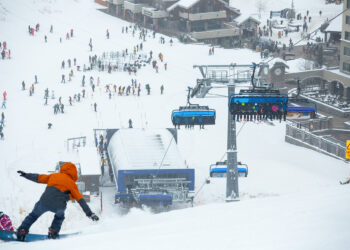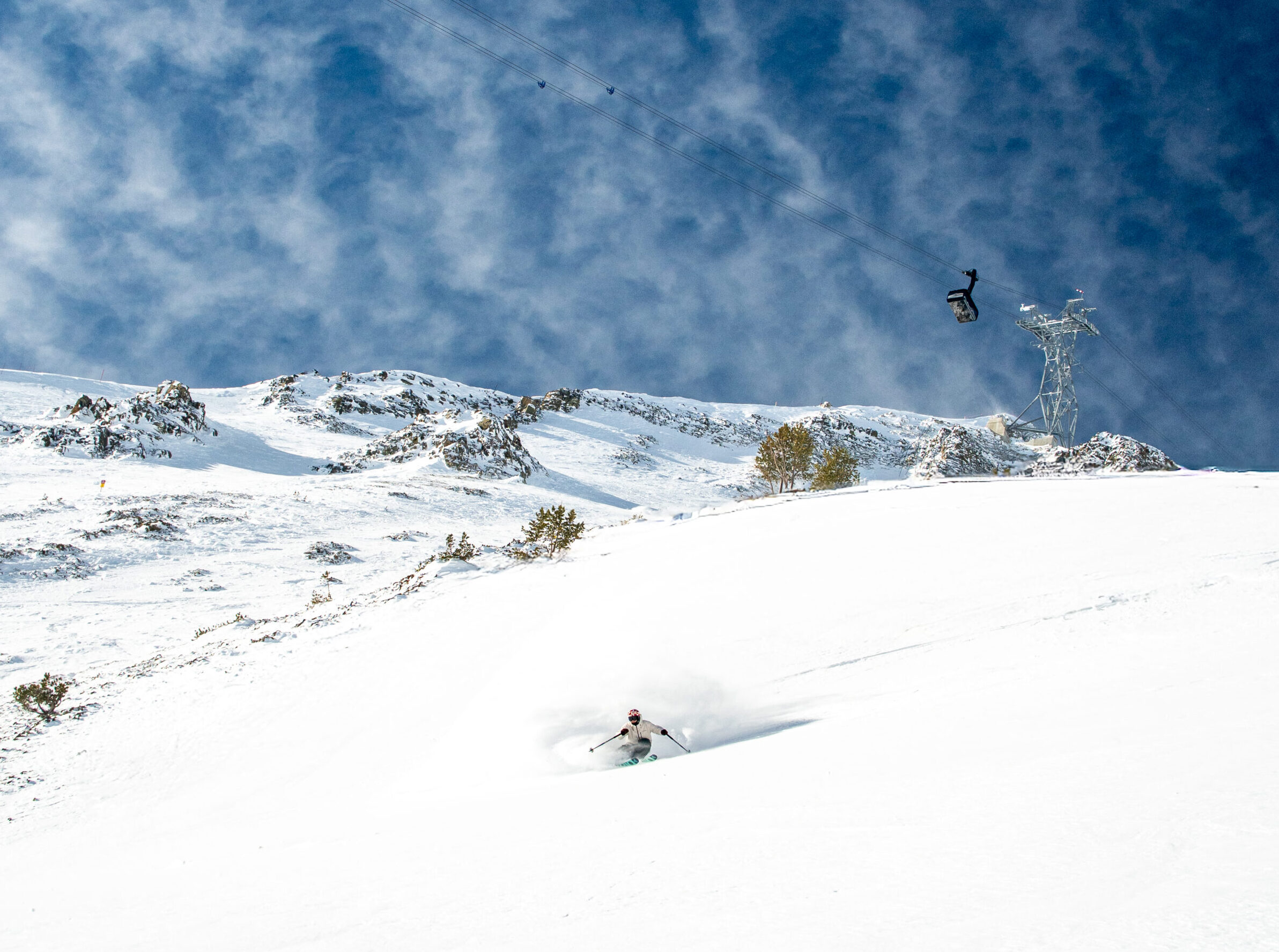
‘Surprisingly accurate’ model has resort optimistic about ‘excellent’ 2025-26 forecast
By Jack Reaney SENIOR EDITOR
How does “significantly above average” snowfall for Big Sky sound? An AI-powered long-range forecasting model is calling for plentiful Lone Mountain powder.
After three trial years of “surprisingly accurate, not perfect” forecasting from an experimental model developed by Big Sky Resort President and COO Troy Nedved, he’s now confident enough to share—and equal parts hopeful the forecast for 2025-26 will deliver.
As of Wednesday, Sept. 24, the model predicts Big Sky Resort will receive between 113% and 123% of its annual average snowfall at the mid-mountain Lobo station, equivalent to 300 to 325 inches of snow—Nedved notes 300 inches below the treeline “is a big year for us” and that snowfall totals are typically up to 15% deeper at higher snow stations. Temperatures are expected to linger between two and four degrees Fahrenheit below average, another key factor in preserving long-term snowpack and surface texture.
“I actually am starting to buy into this… so for those of you who are considering buying new powder skis, this is the year,” Nedved said during the Big Sky Owners Association’s annual meeting, his first time speaking publicly about the resort’s exploration into AI forecasting.
Nedved said a positive, albeit uncertain forecast is gravy atop Big Sky’s greatest consistencies: annual snowfall total and cold weather. But he’s excited by the numbers.

“There’s no guarantees,” he told Explore Big Sky. “Mother Nature will humble us, and prove to us that we can’t predict stuff at times. There’s no certainty to any of these forecasts. But the increased accuracy is something that may help us anticipate and plan accordingly.”
The resort began testing AI forecasts to improve financial modeling, and kept an eye on results for three years. The forecasts were accurate within roughly 5%, including a prediction of the historically dry early season in 2023-24.
“Which was shocking,” Nedved recalled. “But we didn’t pay that much attention, because we didn’t trust [the model].”
Trust is building.
Confidence ‘exceptional’ that ENSO-PDO amplification means powder
Nedved spoke with EBS in his office in late September, projecting the latest model run on a wall-mounted flatscreen TV.
Since last running the model in early September, he was pleased by a continued positive shift in projected annual snowfall: from an initial range of 4 to 19% above average, to the aforementioned 13 to 23% above average. Furthermore, the model’s confidence improved from “good” to “exceptional,” now at 87%.
The model breaks the season into three two-month periods, currently predicting an exceptionally snowy mid-season. January and February could see between 135 and 155 inches under “peak ENSO-PDO coupling” and exceptionally cold temperatures, following up a “quite favorable” early season, Nedved said, with cold temps to help with snowmaking.
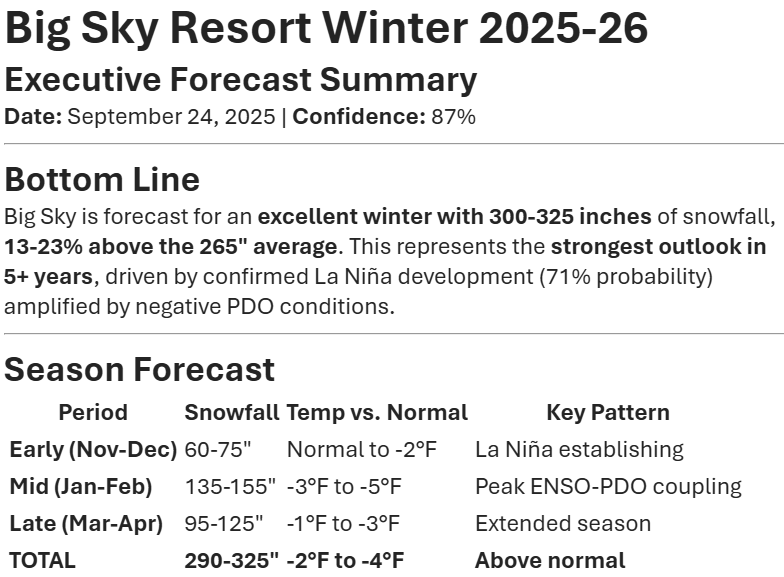
Using Claude by Anthropic, the AI model pulls data primarily from NOAA’s Climate Prediction Center and Pacific SST Analysis, the World Meteorological Organization and International Research Institute for Climate and Society. Factors include patterns in ocean temperatures, currents and the jet stream.
ENSO, or El Niño-Southern Oscillation, and PDO, or Pacific Decadal Oscillation, are two of the most relevant indicators for future winter weather, Nedved explained. He instructs the model to use all relevant data for its prediction, and to weigh ENSO and PDO as “core pieces of data.”
ENSO and PDO are both predicted to favor Big Sky. When that happens, it creates an amplification—30% this year, according to the forecast—that has been intact for some of Big Sky’s snowiest winters. According to the model, the ENSO-PDO amplification recently affected 2017-18, 2010-11 and 2007-08—all received more than 300 inches at the mid-mountain Lobo station.
“You put these two key things together, and it’s—well, I guess you’d call it a perfect storm,” Nedved said.
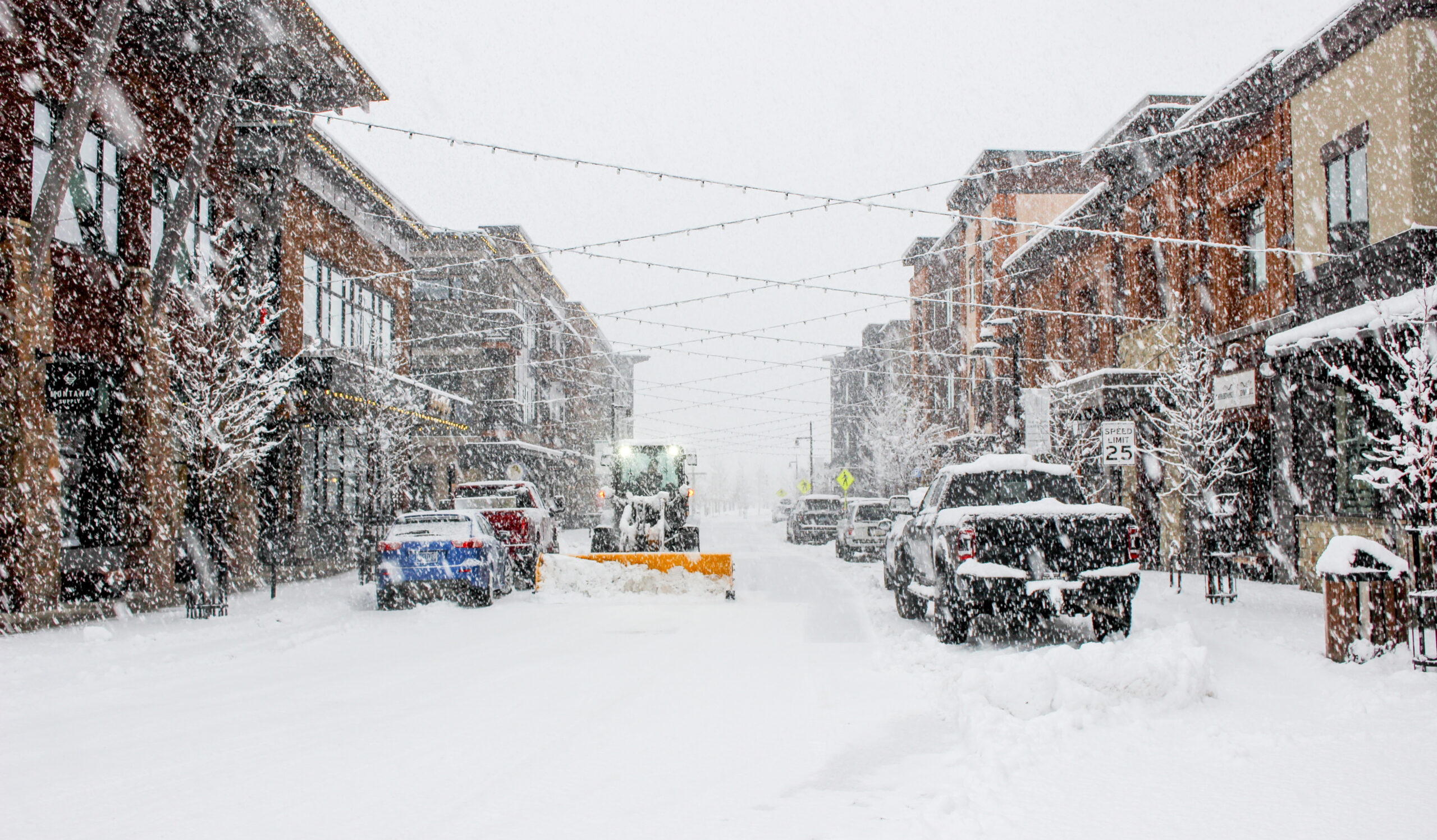
EBS explained the concept to Ian Gesell, a Great Falls-based meteorologist with the National Weather Service.
“I think using AI is a very good idea, because there’s so much meteorological data that can be analyzed,” Gesell said in a phone call. “And it’s hard for me—as a computer and a single person—to analyze it all. Using AI, in theory, once it gets better and better, should lead to a better forecast.”
Gesell said the resort’s 2025-26 forecast generally checks out. The ENSO-PDO amplification is a real thing and “definitely possible” for December and January, although he noted the snow-friendly La Niña pattern is predicted to fade by February.
Overall, AI tools can help make nuanced, “nitty gritty” information more accessible to the public. Gesell has noticed a greater interest from citizens in weather technology over the past five or 10 years.
Nedved does not see the resort’s model as unique or proprietary—traditional meteorology institutions like the National Weather Service and NOAA have already been implementing AI to analyze data to predict climate in the same way.
“Yeah, we definitely are,” Gesell said. He routinely uses a few AI models and a global ensemble to compare with regular models. “Helps to give us kind of a different idea, and different approach to looking at long-term forecasts.”
However, that data has never been so accurate to a specific location and microclimate such as Big Sky Resort. Furthermore, when prompted, the specialized model can offer industry-specific insights.
Takeaways for Big Sky Resort operations
Boyne Resorts President and CEO Stephen Kircher spearheaded the AI exploration. Nedved brought Kircher’s directive to Big Sky, playing with the model until he saw accuracy.
“[Kircher] gets so excited about the upcoming winter, and he wants us to use every tool and everything we can to make sure that we’re making the best of it,” Nedved said. He added it’s likely that other Boyne-owned ski areas are making similar strides. “It’s being looked at through the Boyne network.”
Big Sky Resort has not taken meaningful action on insights from these forecasts. There’s no plan to share optimistic outlooks for marketing, or to adjust the traditional staffing schedule which is largely independent of weather.
“We’re not there yet, and I don’t want to get ahead of ourselves,” Nedved said. “But I’m comfortable sharing it locally with our partners and with our community, to know that… this is how we’re evolving as a company, this is what we’re using as tools.”
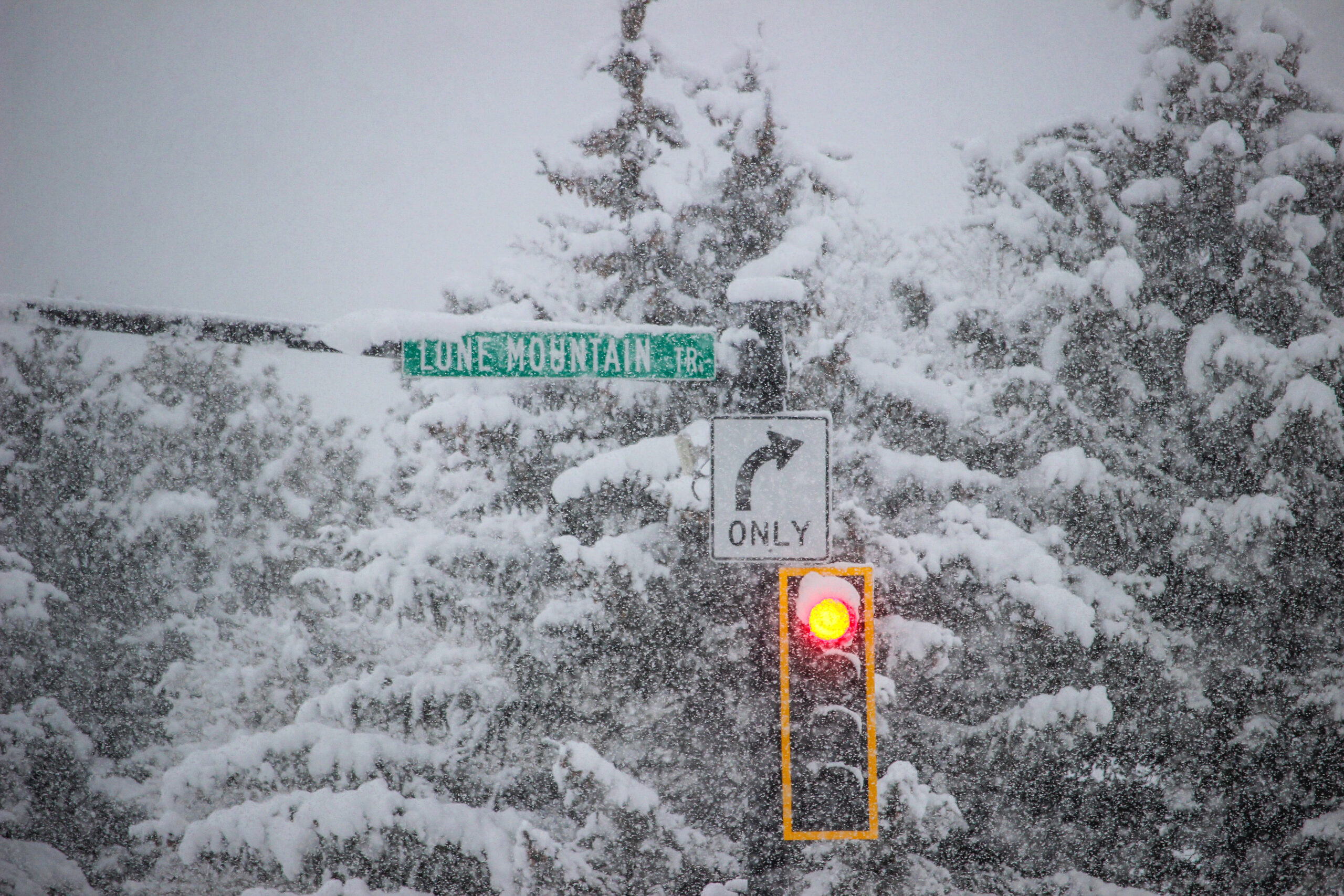
If confidence in the model continues to grow, he imagines the resort implementing strategies for on-mountain operations like snowmaking.
If the forecast called for another exceptionally warm and dry November and December as seen in 2023-24, the resort might position itself differently to prioritize a deep manmade snowpack capable of carrying the resort’s core arteries through the whole season. “We would probably consider consolidating water use in certain zones… versus having a bunch of stuff that’s spread out just a little too thin,” Nedved said.
Fortunately, this winter’s prediction offers the alternate extreme: a low-stakes test of an optimistic forecast.
“We don’t know all of the things this would change operationally for us, but now that we have some confidence to its accuracy, I think that’s the next step,” Nedved said.








